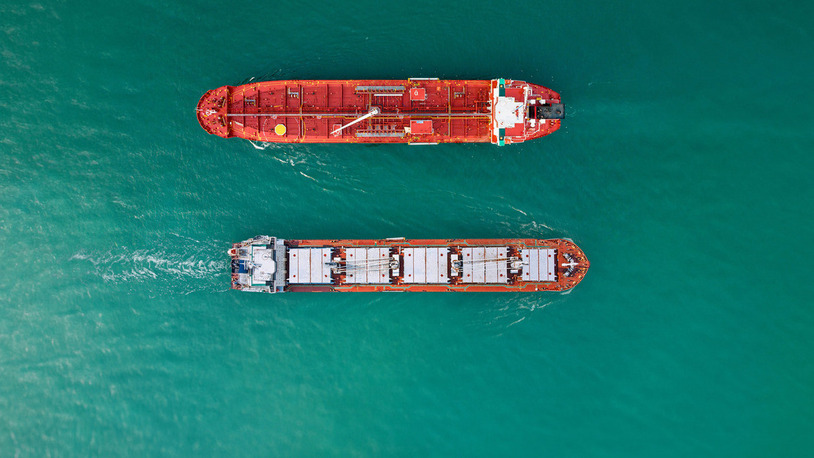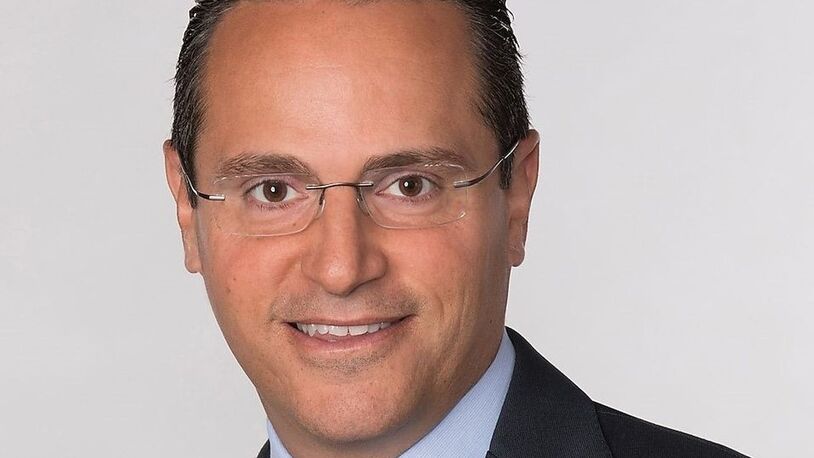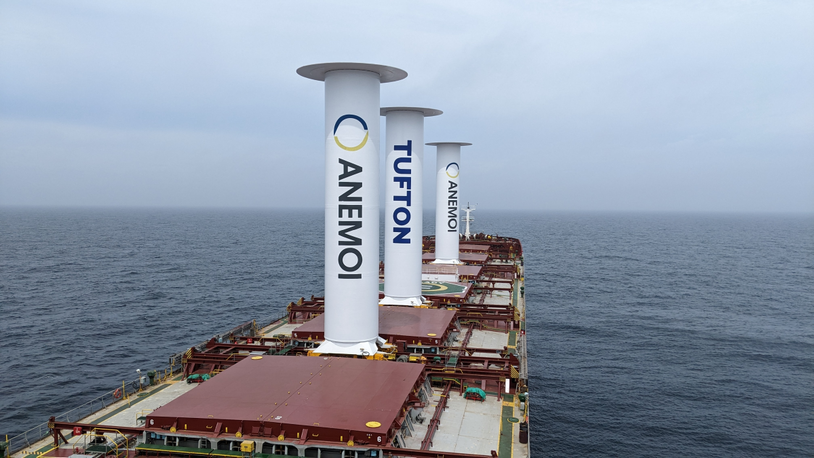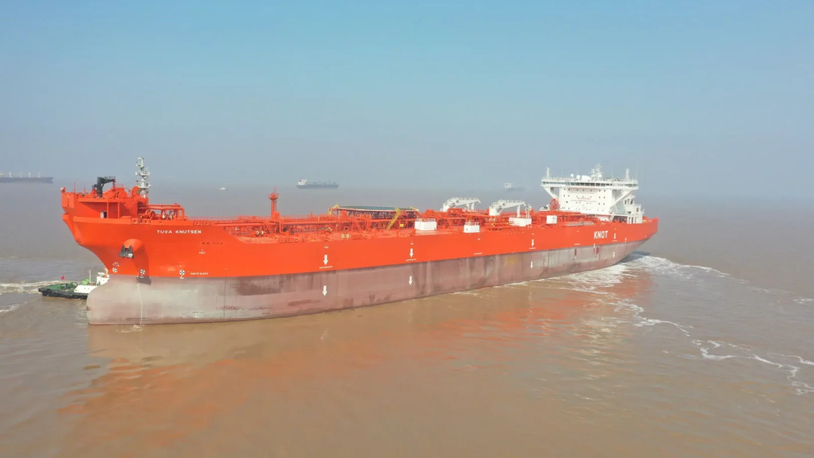Business Sectors
Contents
Turkish yard prepares to switch sizes
Having established itself as one of Turkey’s leading builders of large sophisticated chemical carriers, Cicek Shipyard is now focusing on smaller tonnage as the 2010 phase-out of single hulls approaches
Cicek’s sales and marketing director, Berke Cicek, says that the Turkish yard’s track record at the larger end of the scale means that it has the experience and knowhow to design, build and market the smaller chemical tankers needed when the 2010 phase-out of single hull tonnage takes effect.
“The small tanker fleet in service is ageing and characterised by designs that are no longer competitive. Owners will either adopt new improved designs that offer enhanced manoeuvrability, cargo handling and safety, or be at a disadvantage as they vie for oil major approvals, especially after 2010.”
Cicek shipyard was founded in 1980 in Tuzla Bay by Celal Cicek (Berke’s father). The yard initially built 3,250 dwt dry cargo vessels and tankers; and it was not until 2004 that it delivered a ship larger than 6,000 dwt. This was the 15,000 dwt Puli, an IMO Type II chemical tanker. Two sisters were also completed and named Puli, too; such was the popularity of this ship type that each newbuilding was re-sold by the original owner shortly after delivery.
2005 saw the delivery of the 40,000 dwt product tanker Barracudas. Less sophisticated than the Puli sisters, this ship represented a major step in the size of ship being built by Cicek, and pre-empted the yard’s entry into series production of chemical tankers.
In parallel with these deliveries, Cicek has benefited from strong investment in flexible automation (notably welding) equipment and training, which enables the yard to improve quality and productivity levels. Recently, an agreement was signed with a Scandinavian inspection team to carry out independent third-party quality controls in the yard during ship construction.
Today, Cicek Shipyard ranks as one of Turkey’s largest, employing around 650 full-time employees plus some 450 subcontractors. Its centrepiece is a 250m-long building dock served by a 300-tonne gantry crane. This has the potential to build 100,000 dwt vessels. “With our docking advantage we can also repair all types of tankers and are additionally capable of conversions,” adds Mr Cicek. In 2005 the yard converted a 40,000 dwt single hull tanker into a double hull vessel. There is also a smaller slipway for ship construction.
Mr Cicek believes that this ability to switch between different ship types and projects augurs well for the yard’s future. “With the rapid expansion in Asian shipyard capacity and a likely downturn in the market around 2011/2012, the future trading environment could be difficult,” he says, adding that he expects mainland European shipyards to suffer and consolidation in the Turkish shipyard sector to result.
The company is continuing to build 18,000-26,000 dwt chemical tankers for domestic owner Besiktas Shipping, and delivered the 26,000 dwt Besiktas Jutland earlier this year. At the SMM exhibition in Hamburg in September the yard will also formally unveil the first in a series of much smaller ships: four 3,150 dwt IMO II chemical tankers jointly designed with a local company. The yard is currently working on designs for smaller sized LPG and LNG carriers with a view to entering these markets from 2010.
Besiktas Jutland (hull no 41) was the biggest chemical tanker to be ordered from Cicek when the 26,000 dwt IMO Type II oil/chemical design was contracted by Besiktas Shipping in 2007. Built to an Admarin DCC design, this ship was sold to another Turkish owner for a reported US$43 million four months before it was delivered, and renamed Korsaro.
Cargo is carried in 14 coated main tanks equipped with heating coils, with heat supplied by two 4,000kW Aalborg-Wiesloch thermal oil boilers. Each tank is served by a Hamworthy Svanehøj electric-drive deepwell pump: 10 of these are DL 150d/200 units, each rated at 445 m3/h, and the other four are DL 132d/150 versions rated at 280 m3/h – all at 120 mlc. Two DL 100c/100 pumps serve the two deck-mounted slop tanks, each with a capacity of 120 m3/h at 120 mlc. Tank monitoring and level measurement is by a Saab Rosemount TankRadar system.
Hamworthy Svanehøj’s scope of supply includes ABB explosion-proof electric pump motors, a frequency converter package to control the equipment, and a hydraulically-driven NH 80-1-NE portable pump rated at 70 m3/h at 70 mlc. Total capacity of all 16 tanks is 31,258m3 (or 29,720m3 when 95 per cent full). Hamworthy Svanehøj also supplied two ballast pumps.
Gürdesan supplied a hydraulic hose-handling crane with an SWL of 10 tonnes at an outreach of 20m, also a provisions/rescue crane. Deck machinery from Rolls-Royce includes two hydraulic combined anchor and mooring winches; two hydraulic mooring winches aft, and longitudinally mounted mooring winches forward of the superstructure and aft of the forecastle.
Main propulsion power is provided by a MaK 9M43C engine developing 9,000kW at 500 rpm and turning a ZF propeller via ZF W103100 NC reduction gears. A PTO from the gearbox drives a Leroy Somer A50 1M7 shaft alternator, and electrical power is also supplied by three 800kW gensets driven by Yanmar 6N21AL-SV engines, and a Lindenberg emergency unit. Korsaro can maintain around 16 knots at a design draught of 10.9m, with 90 per cent MCR and a 10 per cent sea margin. Bunker capacity is approximately 957m3 of HFO and 217m3 of MDO.
Auxiliary machinery includes a Sperre air compressor, Jowa 3 Sep oily water seperator, Desmi engineroom pumps, Sondex coolers, and air conditioning, heating and ventilation from Heinen & Hopman Engineering BV. The flap-type rudder is turned by Rolls-Royce 900-2 rotary vane steering gear.
Scheduled for delivery in September is the first of the four 3,150 dwt IMO II oil/chemical tankers (hull nos 45, 46, 47 & 48) referred to previously. These have been constructed to meet ice class 1B standards (also with Bureau Veritas) and will be capable of worldwide trading with cargoes of oil products, chemicals, and vegetable, animal and fish oils. Variants of the design include refined products and bunker tanker options. High performance Jotun coatings are used on the hull.
The vessel has a cargo carrying capacity of 3,710m3 in 12 segregations and each of the 12 cargo tanks has its own electric-drive deepwell pump. There are also two slop tanks on deck. The Hamworthy Svanehøj DL 100c/100 cargo pumps are rated at 150 m3/h at 120 mlc) and enable a full load of cargo to be discharged inside six hours. Alternate and asymmetrical loading at sea is possible.
Hamworthy Svanehøj’s scope of supply for this ship again includes explosion-proof electric pump motors, a frequency converter package, and a hydraulically-driven NH 80-1-NE portable pump rated at 70 m3/h at 70 mlc; the company holds orders for similar pumps for the other three ships in this series.
Ariston supplied the cargo level gauging system and high level alarms, and MMC the portable ullage device. Tank cleaning machines are Scanjet SC40 RT units. High velocity Presvac pressure-vacuum valves are fitted to each cargo tank, and a Generon HP 6800 nitrogen generator can deliver 750 m3/h of inert gas.
The cargo tanks are coated with Advanced Polymer Coatings’ MarineLine product, which the shipbuilder says was chosen for its quick drying properties and the extended range of cargoes it allows the vessel to carry.
The main propulsion units are two 940kW HRP7311WM azimuth thrusters from HRP in The Netherlands. Each of these units, with an open ICE 1B class propeller of 1,850mm diameter, is driven by a Mitsubishi S12R-MPTK main engine, developing 880kW at 1,600 rpm. This combination produces a service speed of 11.5 knots. HRP points out that the twin propulsion thrusters are well mounted so that they can be accessed without trimming the hull or entering drydock.
Manoeuvrability is further enhanced by a 200kW electric tunnel bow thruster, also supplied by HRP. This is a fixed pitch three step unit running at 1,480 rpm. All the controls for these systems are located on the bridge, where HRP also supplied both port and starboard wing panels.
Electrical power is supplied by three 900kW gensets driven by Volvo Penta engines, and an emergency set is also driven by a Volvo Penta engine. All engines on the ship run on marine diesel oil, and a bunker capacity of 175m3 will give a cruising range of around 4,000 nautical miles.
Inside the engineroom, equipment from leading European manufacturers has been specified. This includes two S-MAN NG/C 2000 (1,200,000 kcal/h) thermal oil boilers, mainly for cargo heating. Alfa Laval supplied a thermal oil exhaust gas boiler and the bilge water separator, Enraf Marine the gas detection system and Desmi the service pumps.
Turkish company Gürdesan supplied much of the deck machinery including a 2 tonne hose-handling crane with a 10m outreach; a combined provision/rescue crane; and combined anchor and mooring winches forward and mooring winches aft.
An Almar CO2 fire extinguishing plant was specified, alongside a local system in the engineroom; these work in conjunction with a Siemens fire alarm system. Stromme-Noreq supplied a free-fall lifeboat and a 12-person rescue (MOB) boat.
Good visibility on the bridge deck level enables safe operations during loading and discharge, and while manoeuvring in and out of port. The bridge electronics for communication and the navigation electronics are a mix of Furuno and Tokimec equipment. TST
Related to this Story
IMO’s net-zero plan poised to pressure ageing fleet with rising costs
Events
TUGTECHNOLOGY '25
Reefer container market outlook: Trade disruption, demand shifts & the role of technology
Asia Maritime & Offshore Webinar Week 2025
Marine Lubricants Webinar Week 2025
© 2024 Riviera Maritime Media Ltd.













